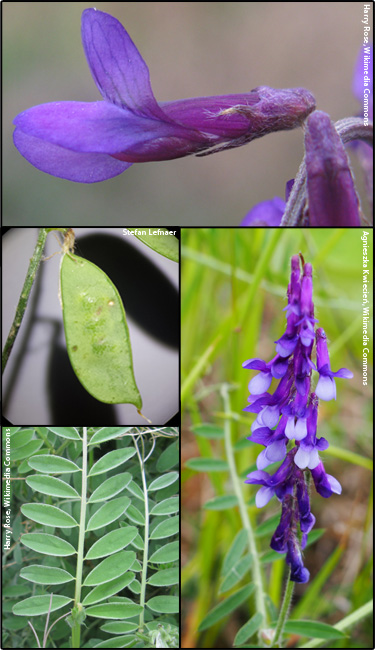Winter vetch (Vicia villosa)
 Synonyms: Vicia dasycarpa
Synonyms: Vicia dasycarpaCommon Names: Hairy vetch, woollypod vetch, woolly vetch, fodder vetch, Russian vetch, sand vetch
Description: Considered one of the most cultivated vetch species. Introduced as fodder in the United States in the 1700s.
Habit: Hardy, frost tolerant, hairy, climbing annual that can grow up to 150 cm tall.
Leaves: Paripinnate, compound, ends in a tendril, 5-12 pairs of elliptical leaflets.
Flowers: Blue, violet, purple or white in color; dense raceme with 7-22 drooping flowers, 0.5-0.75 in. long; calyx is hairy, swollen with 5 lobes.
Fruit and seeds: Flattened pod containing 2-8 rounded seeds that are 3 mm in diameter.
Habitat: Native to North Africa, Europe and Asia. Can be found in vineyards, orchards, plantations, and croplands.
Reproduction: By seed.
Similar species: Bird vetch (Vicia cracca) which has a smooth stem.
Monitoring and rapid response: Handpull small infestations before seeding along with a combination of mowing and herbicides have been effective. Clopyralid and other selective herbicides can be used. Credits: The information provided in this factsheet was gathered from CABI: Invasive Species Compendium and Minnesota Wildflowers.
Individual species images that appear with a number in a black box are courtesy of the Bugwood.org network (http://www.invasive.org). Individual photo author credits may not be included due to the small display size of the images and subsequent difficulty of reading the provided text. All other images appear courtesy of Google (http://images.google.com).
